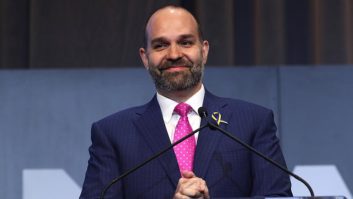Local ownership rules in play
Jan 1, 2002 12:00 PM, By Harry Martin
The FCC is expanding its pending radio multiple ownership rulemaking proceeding to include a comprehensive examination of all aspects of the FCC’s local ownership rules. Among the issues about which the Commission has sought comment are the following:
Congressional authority to regulate. Does the public interest standard of the Communications Act authorize the Commission to conduct competitive and diversity analyses of radio transactions which otherwise comply with the numerical limits on local radio station ownership adopted by Congress in 1996?
What aspects of diversity and competition are important? If the Commission has the authority to go beyond these limits, what should it consider? The FCC has focused on diversity and competition in assessing the impact of proposed transactions. The Commission wants to know what aspects of diversity and competition it should examine.
Defining markets in which stations compete. A starting point in the FCC’s competition analysis is the definition of the relevant product and geographic markets in which radio stations compete. If advertising is the focus, is radio advertising separate from other media advertising? As for the relevant geographic market, the FCC has tentatively concluded that that market is local. But the Commission asks, is the current market definition, based upon mutually overlapping signal contours, the appropriate measure? If not, what other definition should be used?
Measuring market share of stations. Consideration of market share requires a workable mechanism for measuring it. Accordingly, the Commission is seeking comment on how to measure the market share of station groups in a market. According to the Commission, information on advertising revenue or audience share in a market can be obtained from reporting services such as BIA for stations located in Arbitron markets. But once it has those numbers, how should it analyze them? Should the FCC focus on the combined market shares of market participants, as it does in evaluating pending acquisitions via its 50%/70% screen (discussed below), or should it use the Herfindahl-Hirschman Index (HHI) � an index commonly used in antitrust analysis � as a method of comparing pre-acquisition concentration and post-acquisition concentration?
Benefits and harms of consolidation. The FCC also seeks empirical evidence on the economic benefits and harms of permitting greater consolidation in local radio station markets. It wants to know the benefits to stations, advertisers, and the public. It asks what harm to advertisers and consumers consolidation might bring.
Numerical limits vs. analyzing each acquisition individually. The Commission has invited comment on how it should analyze radio acquisitions. Should the FCC look to compliance with numerical limits, should it analyze each acquisition individually without regard to compliance with numerical limits, or should it continue to do both?
If numerical limits are to remain a factor, should the FCC retain the current numerical limits and modify its market definition, or should it modify the numerical limits, and if modification of the limits is in order, what should the new limits be? As one alternative along these lines, the Commission suggests that it could require the presence of at least three competitive independent broadcasters in the market.
Interim application processing procedures. Prior to the completion of the rulemaking, the FCC will examine the competitive effects of radio transactions. In doing so, it will continue to use its 50%/70% screen to determine which applications to examine in detail. Under that screening process, an application that proposes a radio station combination that will give one group 50% or two groups 70%, of the radio advertising revenue of the relevant Arbitron metro market, as reported by BIA, will be flagged for close examination. The flag will be included on the public notice announcing the acceptance of the application for filing.
For applications below the 50%/70% screen, the staff will not conduct a further competitive analysis unless a petition to deny raising competitive issues is filed, at which time a preliminary competitive analysis will be made. The staff may then grant applications that it finds consistent with the public interest and which propose a level of concentration the staff has authority to grant. Applications for which the staff does not have authority to grant will be forwarded to the full Commission with a draft order recommending that the application be either granted or designated for hearing.
Filing comments. The FCC encourages all interested parties to comment on the issues it raises. Such comments will be due February 11, 2002.
Harry Martin is an attorney with Fletcher, Heald & Hildreth, PLC., Arlington, VA. E-mail[email protected].
Dateline
On or before January 10, 2002, all stations were required to place in their public files copies of their issues and programs lists for the fourth quarter of 2001. The next required issues/programs list filing date, covering the period January 1 to March 31, 2002, will be April 10, 2002.











